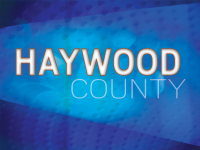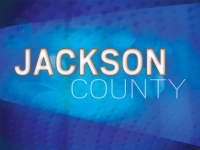Campus visits ‘vital’ to Western Carolina recruiting efforts
 Jacob Flannick • SMN Correspondent
Jacob Flannick • SMN Correspondent
Hundreds of high school students from across the state and beyond toured the campus of Western Carolina University last Saturday morning, trying to envision whether their next step might lead to Cullowhee in what has emerged as a crucial part of the university’s recruiting efforts.
More than 530 prospective students came to the open house — one of the most considerable turnouts the university has ever seen. That’s good news for WCU, which see campus tours as an increasingly important recruiting tool.
The rise in open house takers corresponds with rising enrollment and a rise in the freshmen retention rate.
“It is so vital for them to see who we are, what we are,” said Phil Cauley, director of student recruitment and transitions at Western Carolina.
Related Items
Dozens of seemingly enthusiastic tour guides, donning purple T-shirts bearing the university logo, led small groups of students with parents in tow around campus. Guides sought to draw distinctions between their university and rivals, with Appalachian State coming up a lot, followed by UNC-Asheville. They were full of details. One guide, speaking before a small group gathered on the campus concourse, noted that the first three-pointer in college basketball history was made in the old university gymnasium.
The tone among visitors last week varied. Most of the prospective students were high school seniors, accompanied by their parents and siblings. Some gradually eased into the new setting as the day progressed, their strides between academic buildings sometimes turning into a strut. For others, spending the overcast morning and afternoon amid presentations from instructors about academic programs, however relevant to their ambitions, might have proved tiresome.
Whatever impressions were left on visitors, the university is drawing more of them to its campus.
A record number of prospective students toured the university during its four open houses last year — nearly 2,300, a significant jump from the 1,700 who visited the previous year.
The open house push is carrying over to enrollment. Of the 1,550 who enrolled as freshmen last year, about 70 percent had visited the campus at least once, Cauley said. That’s up from an average of about 60 percent in recent years.
In September, the university announced it had reached its highest enrollment in history, slightly more than 10,000 students.
The growing curiosity surrounding the university — some 15,000 applications flowed into its admissions office last year, triple the average five years ago — is largely a result of a broad revision to its recruiting process.
In 2008, the university hired a marketing firm to help draw more applicants, and the reach of its recruiting efforts have since extended to hotel ballrooms in cities around the state, including Greensboro and Raleigh.
Beyond emphasizing its widening scope of academic programs, the university has sought to underscore other components that have helped raise its prestige. Among them is its marching band, Pride of the Mountains, which university officials at the open house noted is expected to appear this year in the Macy’s Thanksgiving Day Parade in New York City.
At the same time, the university has raised its academic standards. Shifting its focus away from test scores as the top litmus test when picking which students to accept, admissions officers are giving more consideration to applicants’ cumulative GPA and class attendance, among other indicators like early applications and multiple campus visits. Ultimately, those things better reflect whether a student will earn a degree.
“We’re not trying to grow fast; we’re trying to grow smart,” Sam Miller, vice chancellor of student affairs, told students in the Ramsey Center in an opening speech before they toured the campus.
He reiterated a policy requiring that returning students on academic probation raise their cumulative GPA within one semester, lest they face suspension. The policy is less strict for freshmen and transfer students in their first semester.
The university also has started improving what had long remained a relatively low retention rate among freshmen, whether a result of transfers to other schools or intervals in studies. Nearly 79 percent of freshmen returned to campus this year, according to the university, up from the average 73 percent rate during the past decade. That is comparable to UNC-Asheville, which sees about 80 percent of freshmen return.
The increasing odds of freshmen coming, or returning, to campus comes amid a broadening college social scene in and around Cullowhee. There, new bars have opened during the past year — albeit a couple — after Jackson County voters passed a ballot measure lifting a countywide ban on alcohol sales.
Recruiters acknowledge that the environs of the university are an important factor in drawing interest, though they remain careful not to mislead.
“We’re trying to be truthful and accurate. … we’re not for everybody,” Cauley, the university recruitment director, said. “We’re comfortable in our own skin.”
But for many college-bound students, along with their parents, such a decision largely is financial.
“If it wasn’t about money, we know where she’d go,” Nanette Harden said of her daughter, a high school senior in Mooresville, about a half hour north of Charlotte, who has held out hope to study behavioral sciences at the University of Virginia. “Tuition is just outrageous” for those considering out-of-state schools.
For others, particularly those from urban areas, the rural nature might seem unappealing.
“It’s kind of out of the way,” said Cecil McManus of Cary, a suburb of Raleigh, who graduated from WCU in the mid-1980s.
But he ultimately liked it and last weekend brought his own daughter, Brianna, a high school senior, to the open house. She had already made up her mind, deciding during her visit to campus that she would come to the university to study music.
“I think I’ll fit in here,” she said, noting that she already was admitted to the university.













